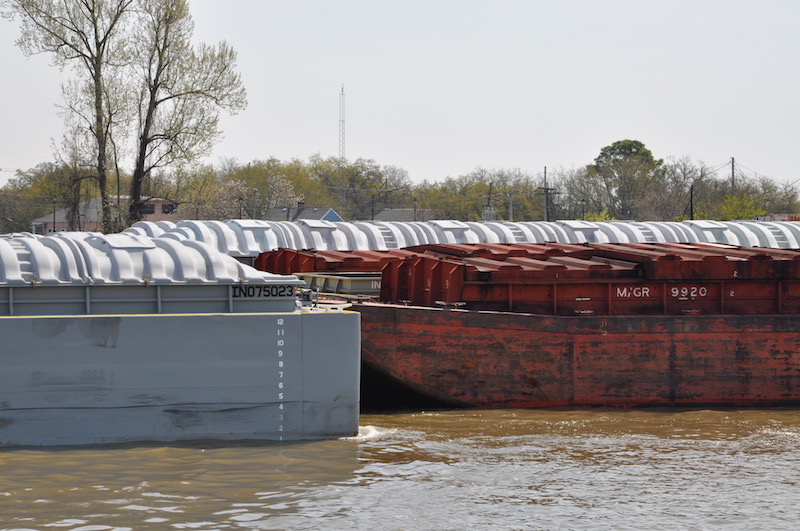Through April 21, calendar year-to-date grain barge tonnages through the locking portions of the Mississippi, Ohio, and Arkansas rivers were 9.1 million tons, the U.S. Department of Agriculture reported today.
 That's 14% lower than the three-year average and 27% lower than the 12.4 million tons moved during the same period in 2017, the USDA reported in its weekly Grain Transportation Report (GTR). In early 2018, low water and ice delayed barge traffic on portions of the Mississippi and Illinois rivers and kept weekly tonnages below average. Water levels changed drastically in the second half of February when significant rain events caused high-water conditions that have continued into April. The high water conditions slowed traffic and kept weekly tonnages below average except for a two-week period in late March, according to GTR.
That's 14% lower than the three-year average and 27% lower than the 12.4 million tons moved during the same period in 2017, the USDA reported in its weekly Grain Transportation Report (GTR). In early 2018, low water and ice delayed barge traffic on portions of the Mississippi and Illinois rivers and kept weekly tonnages below average. Water levels changed drastically in the second half of February when significant rain events caused high-water conditions that have continued into April. The high water conditions slowed traffic and kept weekly tonnages below average except for a two-week period in late March, according to GTR.
In addition, lock repairs on the Ohio River have disrupted traffic and increased barge transit times. High-water conditions led to increased barge freight rates, as barge operators experienced extra operating costs to handle longer transit times of barge movements. The high-water conditions have caused barge operators to reduce the size of tows, limit operations to “daylight only” in certain areas, and use towboats with high horsepower capacity to maintain safe navigation.
The Illinois River barge rate for export grain has been above average since the high-water conditions began in February.




